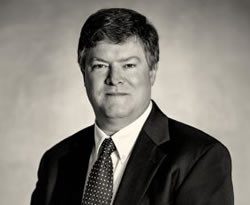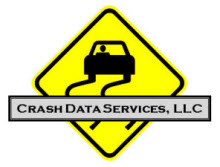In the last installment (STN, Jun, 2007), I stressed the importance of distinguishing between an actual bus stop and the waiting area across the street from it in terms of safety. But the selection of the stop and waiting area also involves concerns for student security. Sometimes, there are trade-offs that must be made. These trade-off are often complex and subtle. But they must be made correctly.
Safety versus Security
Several years ago, as an expert witness, I helped defend a national schoolbus mega-contractor in a crossing case where a youngster prematurely stepped into the roadway and was struck by an automobile - before the bus was even in sight. Superficially, what happened could have been classified as a simple mistake - although there is little leeway in our legal system for genuine accidents.
Five elementary students lived deep in a rural subdivision served by a "collector" street which connected their neighborhood to an "arterial" street, or main road, to school. Traveling along the main road for years, these students' schoolbus passed them by on the opposite side of the street, turned around a few blocks further down, and 10 minutes later returned to the bus stop to pick them up on the side of the roadway on which they lived.
Because of their ages, the students' parents took turns driving them to the bus stop. They preferred to wait at the stop with them, but the extra 10 minutes it took the bus to turnaround made some parents late to work. In response, they asked the contractor to let these students catch the bus on the opposite side, and consistent with sound schoolbus industry safety practice, also agreed to keep them from crossing until the bus arrived. When the bus arrived, the code word employed by the parents to direct the crossing was "O.K."
On the last morning of this new era, two boys stood on the edge of the roadway facing traffic, while three girls faced the patch of woods behind them. One of the girls innocently asked her mother (the parent watching them that day according to the agreed-upon rotation) if she could "go over Sally's house" after school. Her Mom replied, "O.K." Overhearing this answer, and interpreting it as the signal to begin crossing, one of the boys instinctively stepped forward into the roadway and was immediately struck by a passing motorist. The schoolbus had not yet appeared. But as one might expect, its absence did not forestall the inevitable lawsuit.
The plaintiff's expert, a knowledgeable, well-known and career-long leader in the schoolbus community, argued that the contractor was negligent in granting these parents permission, since there was no genuine need for these students to cross at all because, 10 minutes later, the bus could pick them up on the side of the road on which they lived. As the defendant's expert, I was forced to agree with the plaintiff's expert that, all else equal, crossing the street was not as safe as not crossing the street. Judgment in favor of the plaintiff, correct? Not so fast. The next installment of this series will explain how the defendant walked away without paying a dime in damages. Stay tuned.
Ned Einstein is the President of Transportation Alternatives, a passenger transportation and automotive consortium engaged in consulting and forensic accident investigation and analysis (more than 600 cases). Specializes in elderly, disabled, schoolchildren. Mr. Einstein has been qualified as an Expert Witness in accident analysis, testimony and mediation in vehicle and pedestrian accidents involving transit, paratransit, schoolbus, motorcoach, special education, non-emergency medical transportation, taxi, shuttle, child transport systems and services...
©Copyright - All Rights Reserved
DO NOT REPRODUCE WITHOUT WRITTEN PERMISSION BY AUTHOR.











